Risotto with Asparagus & Peas
- By Jennifer Segal
- Updated March 19, 2025
- 123 Comments
- Leave a Review
This post may contain affiliate links. Read my full disclosure policy.
Learn to make restaurant-quality risotto with this simple recipe—creamy, cheesy, and packed with fresh spring flavor.

Photo by Johnny Miller (Clarkson Potter, 2021)
Comforting to eat—and just as comforting to make (all that stirring is like mindful meditation!)—risotto is a northern Italian rice dish cooked gently until it reaches a creamy consistency. Most people think of it as a restaurant-style dish, but this risotto recipe is easy to make at home with very few ingredients. The only thing to keep in mind is that it requires frequent stirring, so you need to stay close to the stove for 25 minutes while it cooks.
This recipe highlights seasonal vegetables, but there’s plenty of room for improvisation. Don’t love asparagus? Swap in zucchini or mushrooms. Cooking vegetarian? Use vegetable broth instead of chicken. Want to dress it up? Stir in some fresh herbs at the end. You really can’t go wrong as long as you stick to the basic formula.
Serve this risotto as a meatless main with an arugula salad or as a side to something simple, like pan-seared salmon, scallops, or grilled chicken breasts.
“Outstanding. I made the recipe exactly as written and my family declared it ‘restaurant quality.’”
What You’ll Need To Make Risotto with Asparagus & Peas
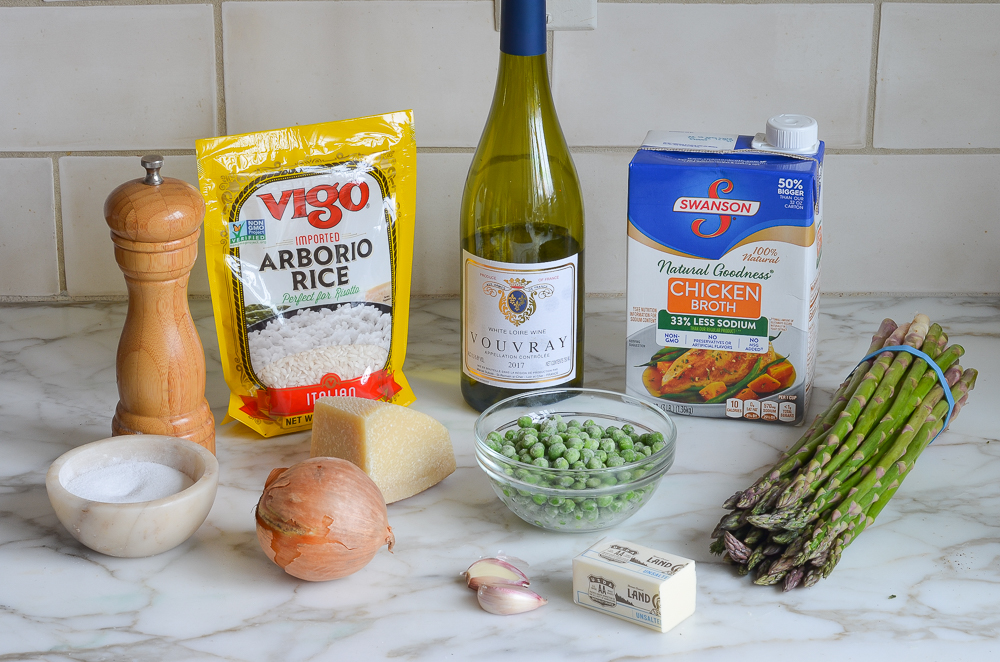
- Low-sodium chicken broth – The cooking liquid for the risotto, absorbed gradually to create a creamy consistency. Using low-sodium broth is important, as it reduces while cooking and can become too salty if not controlled.
- Unsalted butter – Adds richness and flavor. Some is used for sautéing the aromatics, while the rest is stirred in at the end for a silky finish.
- Asparagus & frozen peas – Add color, freshness, and a subtle sweetness. The asparagus provides a slight crunch, while the peas bring a delicate, tender bite.
- Onion & garlic – A classic flavor base for risotto, adding depth and aromatic richness as they soften and cook.
- Arborio rice – The foundation of all risotto recipes. This short-grained, high-starch Italian rice creates a creamy, slightly chewy texture when cooked. You can find it in the rice section of most supermarkets.
- Dry white wine – Adds depth and subtle acidity to balance the richness. If you prefer not to use wine, substitute with more broth and finish with a squeeze of lemon for brightness.
- Parmigiano-Reggiano – Adds a savory, nutty flavor and helps create the risotto’s signature creaminess.
- Jump to the printable recipe for precise measurements
Risotto Recipe: Step-by Step Instructions
The first step to cooking risotto is to bring your broth to a simmer. It’s important that the broth is hot before you add it to the rice, as cold broth will cool the pan down and slow the cooking process.
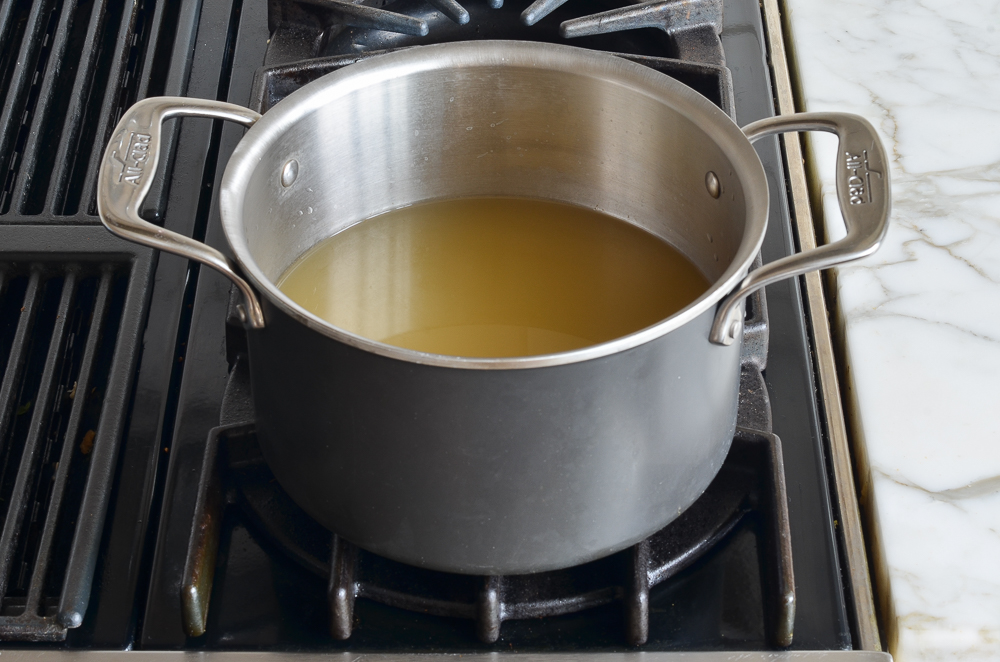
While the broth warms up, melt the butter in a large pot or Dutch oven—it’s important to use a big enough pot since the rice will expand as it cooks. Add the asparagus and sauté for a few minutes until it’s tender-crisp, then toss in the peas and cook for another minute, just until they’re defrosted.
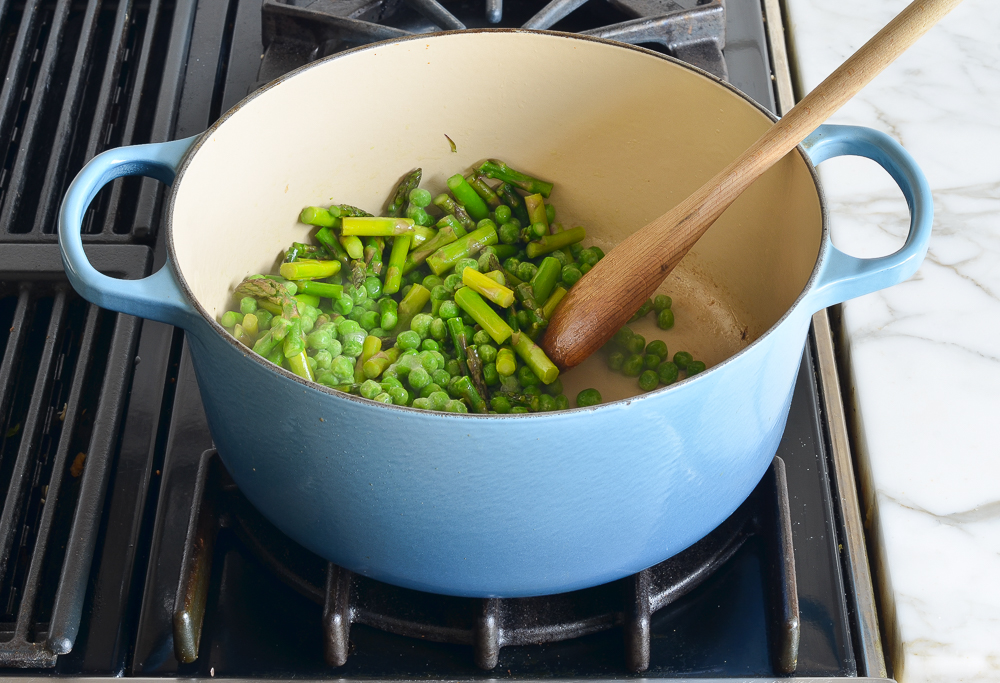
Transfer the veggies to a plate and set them aside—you’ll stir them back in at the very end. Cooking them separately keeps them bright and tender, so they don’t turn mushy in the risotto.
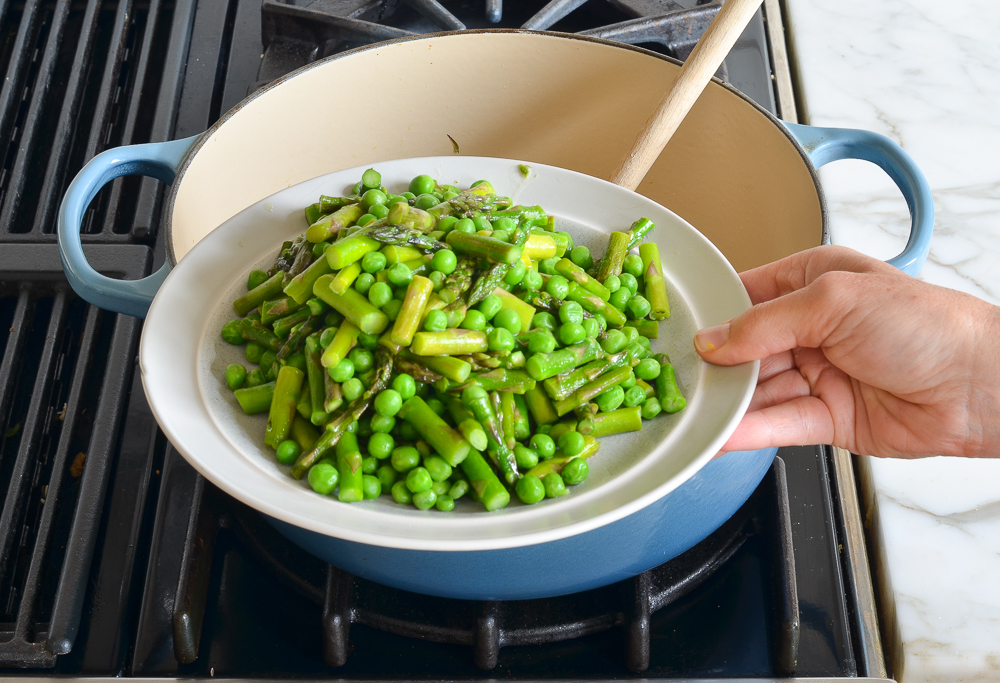
In the same pot over medium-low heat, melt 2 tablespoons of butter and add the onions. Cook, stirring often, until they’re soft and translucent, about 2 to 3 minutes. Stir in the garlic and cook for another minute, just until fragrant—be careful not to let it brown.
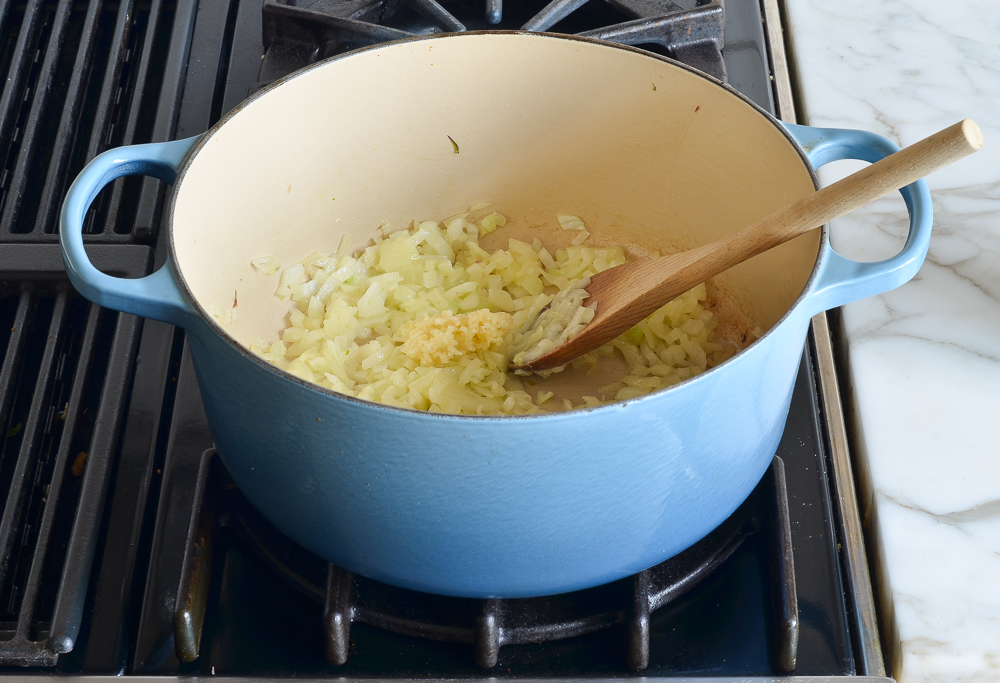
Stir the Arborio rice into the onions and garlic, cooking and stirring constantly for about 3 minutes until the grains look glossy and slightly translucent around the edges. Toasting the rice in butter at this stage deepens the flavor and helps the grains hold their shape, so they don’t turn mushy as they cook.
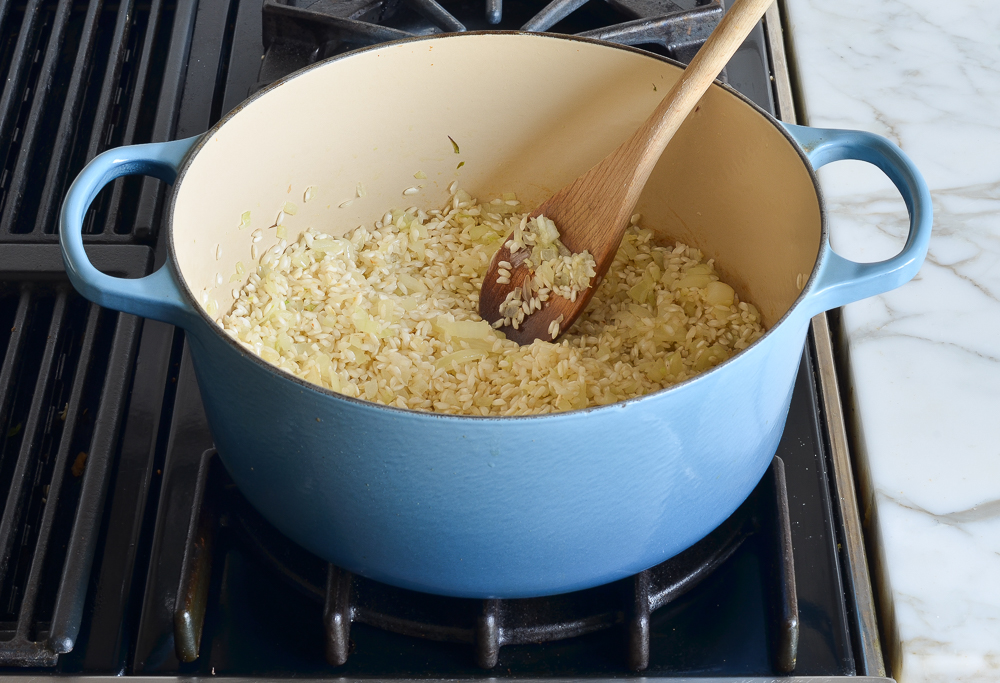
Add the wine and cook until completely absorbed, about 1 minute.
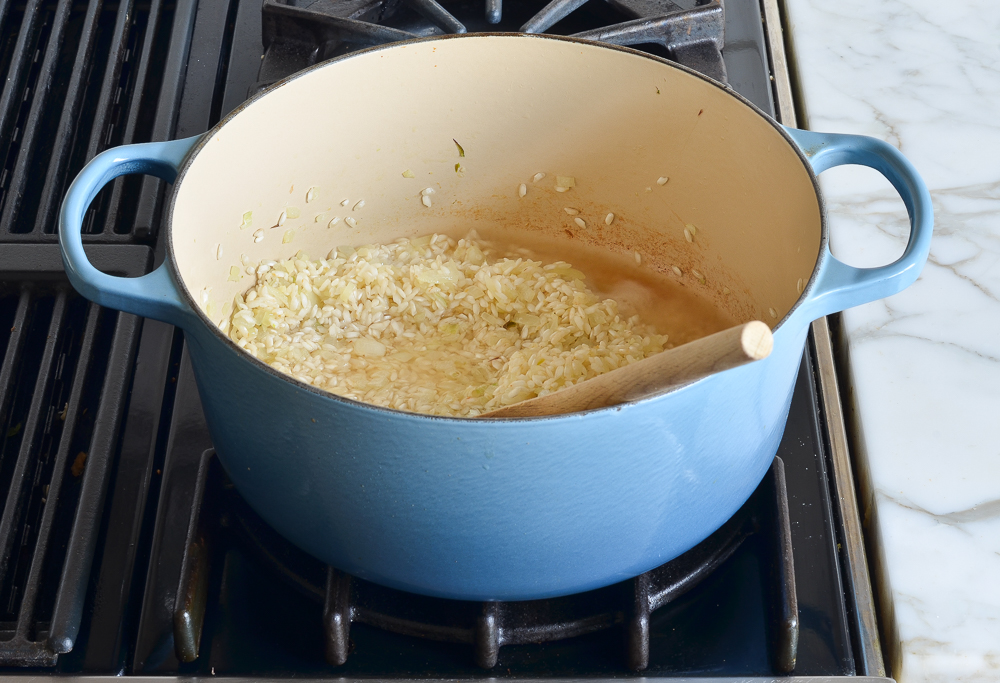
Ladle about 1 cup of the simmering broth into the rice.
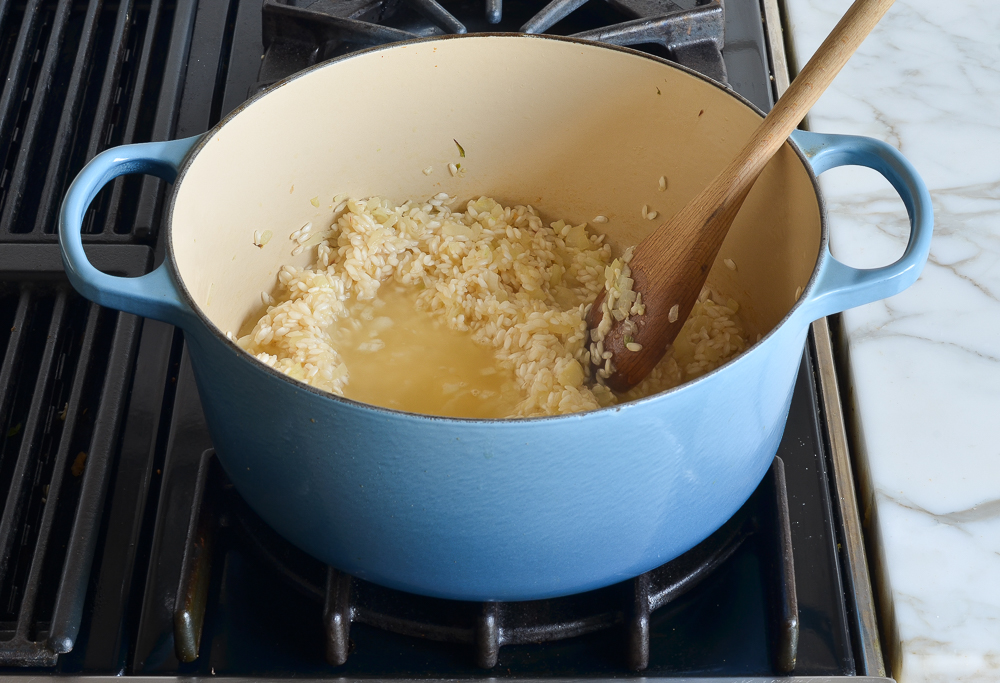
Cook, stirring occasionally, until the liquid is absorbed. Continue adding the broth, one cup at a time, stirring every few minutes to keep the rice from sticking. Let each addition absorb before adding the next. After about 25 minutes, the rice should be al dente—tender but still with a slight bite. No need to stir constantly, just keep an eye on it and give it a good stir every few minutes.
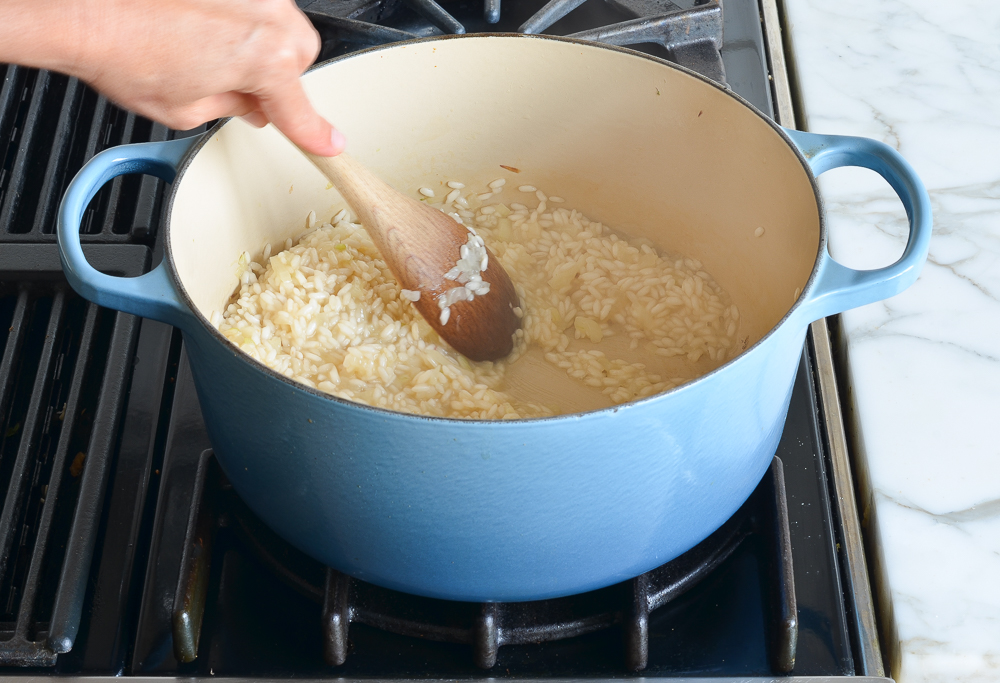
Add the reserved veggies, grated Parmesan, and remaining tablespoon of butter to the risotto.
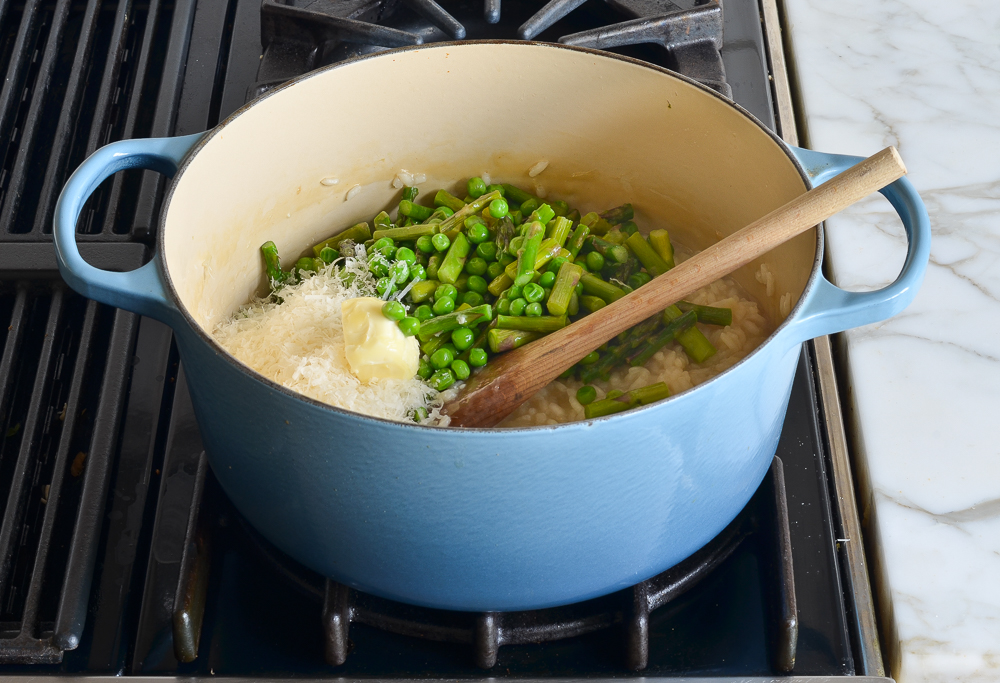
Give it a stir, then taste and adjust the seasoning with salt and pepper if needed. If the risotto seems too thick, loosen it up with a splash of milk. Spoon into bowls, sprinkle with extra cheese, and serve warm.
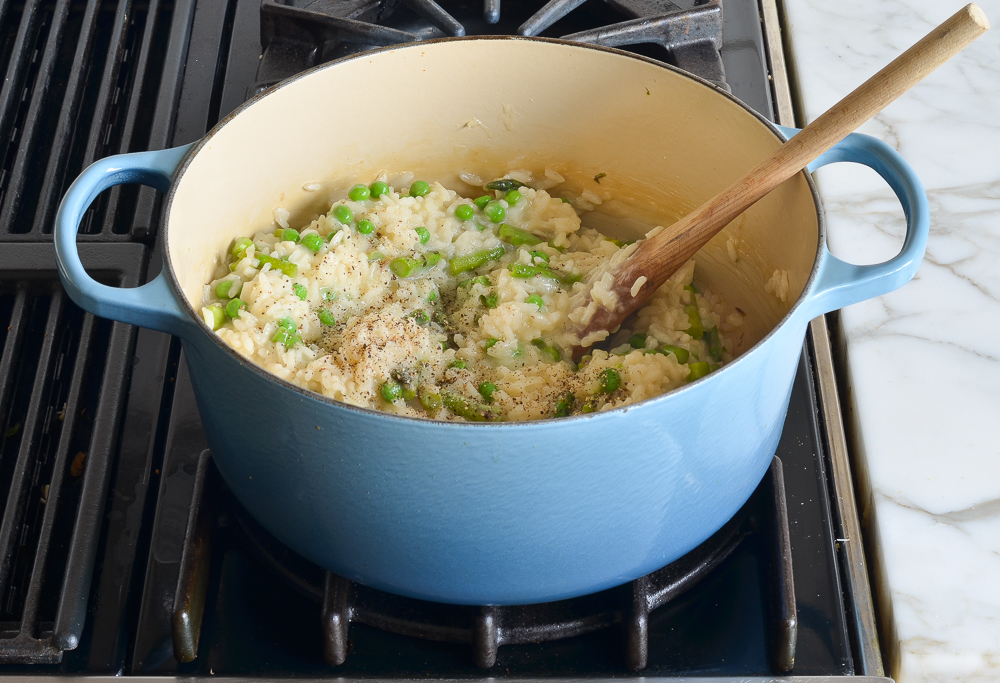
Got Leftover Risotto? Make Risotto Cakes!
If you have leftover risotto, do yourself a favor and make risotto cakes—they might just be even better than the risotto itself! No recipe needed: just mix the cold risotto with a generous handful of shredded cheese that melts well, like fontina, Cheddar, Gruyère, or mozzarella. Scoop about 1/3 cup at a time and shape into patties about 3 inches wide and 3/4 inch thick. Coat them in panko, then fry in olive oil over medium heat until golden and crisp, about 3 minutes per side.
More Rice and Risotto Recipes You May Like
Spring Risotto with Asparagus & Peas

This easy risotto recipe brings together the best of spring—tender-crisp asparagus, sweet peas, and plenty of creamy, cheesy goodness.
Ingredients
- 6 cups low-sodium chicken broth
- 4 tablespoons unsalted butter, divided
- 1 bunch asparagus, preferably thin, trimmed and cut into 1-in pieces
- ¼ teaspoon salt
- Freshly ground black pepper
- 1 cup frozen peas
- 1 medium yellow onion, finely chopped
- 2 cloves garlic, minced
- 1½ cups Arborio rice
- ½ cup dry white wine
- ½ cup grated Parmigiano-Reggiano, plus more for serving
Instructions
- In a medium pot, bring the broth to a simmer.
- Meanwhile, in a large pot or Dutch oven, melt 1 tablespoon of the butter over medium-low heat. Add the asparagus, salt, and a few grinds of pepper. Cook, stirring frequently, until the asparagus is tender-crisp, 2 to 4 minutes, depending on the thickness of the asparagus. Add the peas and continue cooking until the peas are defrosted, about 1 minute. Transfer the vegetables to a plate and set aside.
- In the same pot over medium-low heat, melt 2 tablespoons of the butter. Add the onions and cook, stirring frequently, until translucent, 2 to 3 minutes. Add the garlic and cook for 1 minute more. Do not brown. Add the rice and cook, stirring constantly, until glossy and translucent around the edges, about 2 minutes. Add the wine and cook until completely absorbed, about 1 minute. Ladle about 1 cup of the simmering broth into the rice and cook, stirring occasionally, until absorbed. Continue adding the broth, 1 cup at a time and stirring frequently until it is absorbed, until the rice is al dente and creamy, about 25 minutes. (Be careful not to get distracted while the rice is cooking; while it doesn’t require a lot of skill, it does require you to keep a close eye on it to prevent sticking.)
- Stir in the reserved vegetables, Parmigiano-Reggiano, and remaining tablespoon of butter into the risotto. Taste and adjust seasoning with salt and pepper, if necessary. If the risotto is too thick, thin it with a bit of milk. Spoon the risotto into bowls and serve. Pass the Parmigiano-Reggiano at the table.
Nutrition Information
Powered by ![]()
- Per serving (8 servings)
- Calories: 277
- Fat: 9 g
- Saturated fat: 5 g
- Carbohydrates: 37 g
- Sugar: 2 g
- Fiber: 3 g
- Protein: 10 g
- Sodium: 245 mg
- Cholesterol: 20 mg
This website is written and produced for informational purposes only. I am not a certified nutritionist and the nutritional data on this site has not been evaluated or approved by a nutritionist or the Food and Drug Administration. Nutritional information is offered as a courtesy and should not be construed as a guarantee. The data is calculated through an online nutritional calculator, Edamam.com. Although I do my best to provide accurate nutritional information, these figures should be considered estimates only. Varying factors such as product types or brands purchased, natural fluctuations in fresh produce, and the way ingredients are processed change the effective nutritional information in any given recipe. Furthermore, different online calculators provide different results depending on their own nutrition fact sources and algorithms. To obtain the most accurate nutritional information in a given recipe, you should calculate the nutritional information with the actual ingredients used in your recipe, using your preferred nutrition calculator.
See more recipes:
Comments
Add a Comment Cancel reply
This site uses Akismet to reduce spam. Learn how your comment data is processed.


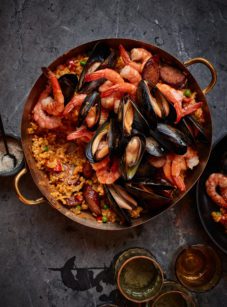


I made this to go with my Easter ham last weekend. It was delicious and well received by all. The leftovers the next day were also great. I’ll be making this again, over and over.
I made this the other night and added roasted shrimp. It was delicious and everyone loved it. The lemon juice at the end really added to this dish. I will be making this again!
This recipe produces restaurant quality risotto!
For years I’ve tried unsuccessfully to make risotto. I gave up entirely for awhile, but when I saw this recipe I thought I’d give it a try- why not!?! I followed it fairly closely (except that I used Marigold bouillon, a larger portion of veg, and substituted frozen edamame/soya beans for the peas, as I had them to hand). The risotto was the best I ever made, and one of the best I’ve ever eaten. The next day I was telling everyone who would listen about it.
Thank you so much for this recipe, Jenn.
My Italian mother made risotto all the time – it was the meaning of “rice” at our house. And she rarely used aborio rice, though I will admit aborio makes it better. But it does work without it. Jenn’s recipe is authentic and the addition of asparagus and peas makes it ideal at my house – rice, asparagus and peas are my husband’s favorite side dishes.
Delicious Spring Risotto!
So good, and so easy to make. I used homemade bone broth instead, otherwise followed your recipe exactly. We ate this with seared scallops!
I made this this evening and it was excellent. I added some grated lemon zest and fresh thyme when I added the Parmesan. So good. Fresh tasting and delicious. This is my springtime risotto. Thank you, Jenn.
Can this easily be made in an Instant Pot?
Hi Micki, I recently purchased an Instant Pot and have played around with it just a bit. I don’t know much about converting recipes to instant pot versions but would guess that due to the attention risotto requires, this may not be a great candidate for an instant pot. Sorry!
Quick and easy recipe! Delicious
A wonderful classic risotto recipe. I loved this. I made it just as described, except I found I did need more broth than the six cups called for in the recipe. Thank you Jenn for another great recipe!